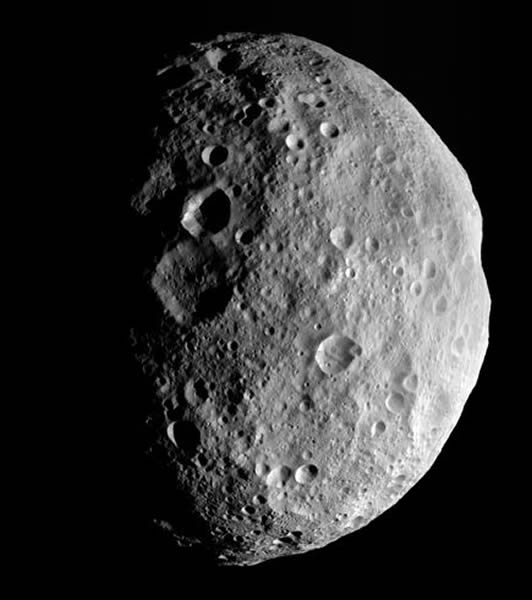NASA Needs Your Help Finding Killer Asteroids
The asteroid Vesta, one of the largest in the solar system.
How do you track down a million potentially hazardous asteroids that each have the capability to wipe out an entire city? That's what NASA needs to do, which is why it has started a new initiative called the Asteroid Grand Challenge.
Scientists estimate that about 90 percent of asteroids that are 1 kilometer or larger—those that pose potential planet-wide danger—have been surveyed. (The one that helped kill off the dinosaurs 65 million years ago is thought to have been nearly 10 kilometers in size.)
However, more than 99 percent of asteroids that are 30 to 40 meters in size—which might not destroy the planet, but could very easily wipe out a city—have yet to be found and tracked.
That's why NASA asked for the public's help this week. Their goal? To find these dangerous asteroids and figure out what can be done to stop any threats they pose.
NASA's announcement coincides with its plans for a new mission to capture an asteroid, redirect it to lunar orbit, and then send humans to study it, said Brian Muirhead, NASA's chief engineer and the leader of the Asteroid Redirect Mission study team.
"What we need to do is increase the frequency of identification of asteroids such that we can also track them and characterize them," said Muirhead. "That will give us a choice [to see] which [asteroid] we want to grab hold of and bring back to the Earth-moon system."
So why haven't so many of these smaller asteroids been found? Some experts believe it's because we currently look for them from the Earth's surface—and our equipment just isn't sensitive enough to pick out these tinier asteroids, which are very faint and very dark.
A Wake-Up Call
NASA's announcement this week comes four months after an 18-meter-long asteroid exploded over Chelyabinsk, Russia, in February.The resulting shockwave caused over a thousand injuries.
Later that same day, an asteroid named 2012 DA14 brushed past Earth from a distance of less than 28,000 kilometers away. The asteroid—nearly 30 meters in diameter, with the capacity to destroy a city—was so close that it threaded its way between the orbits of most telecommunications satellites. (To give a sense of how close that is, most communications satellites orbit about 30,000 kilometers from Earth. That's more than 10 times closer than the distance between the Earth and the moon.)
"This was a wake-up call for the world on the threat near-Earth asteroids can pose for the human population," said Ed Lu, a former NASA astronaut and the chief executive of B612, a nonprofit foundation that has been working for years to raise awareness about asteroid threats.
Through private donations, the foundation is currently working to build its own asteroid-hunting space mission, an infrared space telescope named Sentinel, which is currently set to launch in July 2018 for a 6.5-year mission.
By placing Sentinel in a Venus-like orbit with the sun behind the spacecraft, mission designers expect that they'll be able to see more of the dark and tiny asteroids currently orbiting Earth.
"We estimate that Sentinel should be able to find upwards of 200,000 [asteroids] in just its first year of full operation," said Lu.
Using the technology available right now, it would take about a thousand years to survey the entire population of these smaller asteroids.
NASA also admitted, during a U.S. House of Representatives Science Committee hearing this past spring, that right now they have no way of knowing in advance if any small asteroid has Earth in its crosshairs.
"There is no doubt public awareness of the risks was increased by these February events [in Russia]," said Muirhead. "[But] the question has existed for some time: If we saw something coming at us, what could we as citizens of this planet do to protect it?"
Andrew Fazekas
for National Geographic
Published June 20, 2013












